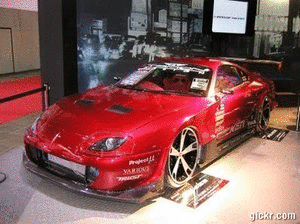Introduction- Compression - Engine compression caused by crankshaft rotation and pistons moving up and down inside the engine block. If the timing belt or timing chain fails it will cause the camshaft to become out of correlation with the crankshaft or allow the camshaft to stop rotating. Either of these conditions will cause the engine to lose compression and sometimes cause internal engine damage.
- Fuel Delivery System - The fuel system includes: fuel pump, fuel injectors, pressure regulator, fuel filter and pressure lines. This system is used to supply fuel under pressure to the fuel injection system, the lack of fuel pressure or volume will cause the fuel delivery system to fail and the engine to stall or not start.
- Ignition Spark Delivery System - The ignition system components include: spark plugs, spark plug wires, distributor (if applicable), crankshaft angle sensor, camshaft angle sensor, ignition coil, ignition module, knock sensor and ECM (engine control module). The engine relies on the ignition spark to be delivered to the combustion camber at the correct time. If the ignition spark stops or is delivered at the wrong time the engine will not run or run poorlyIf Your Engine Cranks but Does Not Start Follow this Troubleshooting GuideVehicles operate by the same principle; basic troubleshooting procedure applies to most cars.
* Step 1 - Anytime you have a problem with electronically controlled components such as an engine, transmission, ABS brake, or SRS (supplemental restraint system, Air Bag) inspect all fuses using a test light and check the under hood power distribution center and under dash fuse panels. If all fuses test ok continue to the next step.
* Step 2 - To check for problems with electronically controlled components such as an engine, transmission, ABS brake, or SRS (supplemental restraint system, Air Bag) and the fuses test ok a trouble code scan is needed to identify any system trouble. Use a simple scanner tool to retrieve trouble codes and see if they relate to the specific problem, like a crank angle sensor failure code. If the trouble code present does not pertain to the immediate problem like an EVAP code ignore it until a later time, after the car is running. The reason we repair non-related codes after the engine is running is because sometime false codes can be triggered by the engine not running. Once the engine is running again the code present might cycle and turn itself off. You might say "if the engine doesn't run shouldn't it have a trouble code?" Sometimes conditions occur that will not be detected by the computer, example: if the fuel pump fails the computer cannot detect the failure, so the engine doesn't start and the computer thinks everything is ok with no codes. If no trouble codes are present proceed to the next step.
* Step 3 - The spark plugs in your engine are used to ignite the compressed fuel air mixture. If the condition of the spark plugs are fouled by excessive fuel or carbon the engine will not start, backfire or run rough. Remove all spark plugs to inspect their condition. Please use this spark plug condition reference guide to see how the spark plugs are operating.
* Step 4 - Determine if the engine has compression, this can be done a number of ways but the most complete method is to perform a compression check. Remove the spark plugs and perform a compression test on one cylinder. If one cylinder has compression then the remaining cylinders usually will be close to the same. Crank the engine over about 5 seconds, normal compression readings should be between 125 psi and 160 psi on each cylinder. If no or little compression exists additional tests will be needed. The most common reason for an engine to lose compression is a timing belt or timing chain failure. If low or no compression exists remove the oil fill cap and observe camshaft rotation when the engine is cranked over. If no rotation exists the timing belt or chain has failed. If your engine has a timing belt and you cannot see the camshaft easily remove the upper bolts to the timing cover and gain visual access to the belt, recheck cam rotation by cranking the engine over. Sometimes a timing belt or chain can jump causing the camshaft to lose correlation with the crankshaft and therefore causing low compression. The best test for this condition is to remove the timing belt/chain cover and inspect timing marks. If the compression is ok proceed to next step.
* Step 5 - Test the ignition system output, ignition systems can vary in configuration but operate on the same principal. Ignition systems can consist of a coil, pick up coil, crank angle sensor, cam angle sensor, spark plugs, spark plug wires, distributor cap, ignition rotor and a distributor and any variations of these components. An ignition coil is a voltage stepper coil that transforms a low voltage (12 volts) signal into tens of thousands of volts needed to jump the gap of the spark plug. This coil is activated by an ignition module triggered by using the camshaft/crankshaft angle sensor; timing is adjusted by the ECM (computer).
Distributor less Ignition System ConfigurationSome ignition systems have a coil for each spark plug. This is called Direct Ignition (DI) system; there are no plug wires in this system just individually controlled ignition coils. The amount of coils or spark plugs depend on the number of cylinders the engine is designed with, example: four cylinders, six cylinders etc. To perform a basic ignition output test you must have a test light follow this ignition system output test video and substitute the ignition coil for the plug wire (Note: leave the coil trigger wires connected).
Coil Over Spark Plug
If the ignition system test is weak or non-existent test the car fuses, both under hood power distribution center and the fuse panel under dash. This test is performed with a test light tool. The test light should illuminate on both sides of the fuse, if not the fuse has failed and needs to be replaced. If the fuses are ok a manufacturer specific repair procedure is required and an online auto repair manual is needed to continue. If the ignition system tests ok proceed to the next step.
* Step 6 - Test fuel system pressure, test for proper fuel pressure with a test gauge on the fuel rail
or in line somewhere in the system, most throttle body injection cars (TBI) are between 13 psi and 17 psi. Most (DPI) direct port inject systems are between 40 psi and 55 psi. If good fuel pressure is present continue to next step. If no or little fuel pressure is present check the fuel pump fuse and fuel pump control relay located in the fuse panel, you can find this fuse and relay by checking your owner's manual, back of the fuse panel cover diagram, or an online auto repair manual, if the fuse or relay has failed replace it a new unit and re-test.
Note: some Ford cars have an inertia switch designed to cut off the fuel pump in the event of an accident. Sometimes this switch can accidentally be triggered causing the engine to not start. If the car is exposed to a random bump either in the road or by another car this switch can be triggered. To check for this condition locate the inertia switch, if the cut off switch has been active it will have a white or red indicator at the top of the switch. Push this indicator down to disarm the cut off switch, if the indicator does not move down it is not activated and is not the problem.
Have a helper crank over the engine while you place your fingers over the relay, does the relay click under your fingers? If so the relay could be working, there is a chance the relay has burned contacts inside causing the problem but we will get back to that. Next, access the fuel pump power feed wire, there are a few ways to do this, first you need a wiring schematic to find the color wire needed for testing, the best way to do this is with an online auto repair manual. Once you have found the color wire it should be located in the wiring harness near the fuel tank were the pump is located. Ground the test light and probe (pierce the wire's outer coating with the test light point) the wire, have a helper crank the engine over. If the test light illuminates and you have no fuel pressure the fuel pump had failed and needs to be replaced. If the test light doesn't illuminate the fuel pump control relay has probably failed, replace it with a new unit and re-test, in most cases this relay is under thirty dollars. There is an outside chance the power feed to the relay has failed but it doesn't happen very often. If this is the case use an online auto repair manual to trace the power source to the relay.
* Step 7 -Test fuel injector pulse and supply voltage output (test is used for most cars). This test will tell you if the computer system has operating voltage and injector trigger signal. Remove an electrical connector from a fuel injector (it doesn't matter which injector) probe both sides of the connector with a grounded test light (there are only two terminals). Have a helper turn the key to the "on" position without cranking the engine and observe the test light. The test light should illuminate one side of the connector only. Next, switch the test light lead to the positive side of the battery to test the system ground injector trigger, probe the side of the connector that did not light up, have a helper crank the engine over and observe the test light, it should blink on and off. If this test checks ok continue to next step. (Note: if no injector pulse is present try disconnecting the remainder of injectors and re-test, if a fuel injector is shorted it can shut down the injector driver causing no injector pulse. If injector pulse returns plug injectors electrical connectors in one at a time until the pulse fails and replace that injector)
If this test revealed that there was no pulse but system has power the ECM is not generating a fuel injector trigger. If there is no trigger to the fuel injector it will not allow fuel to enter into the engine. Some of the most popular reasons that can cause this condition include a shorted crankshaft angle sensor, shorted camshaft position sensor or shorted ECM/PCM. (When a system trouble code scan is performed it does not always catch a crankshaft angle sensor, camshaft position sensor failure). Tip: try disconnecting all non-essential sensors, example: oxygen sensor, coolant sensor, throttle position sensor, air intake temperature sensor, mass air flow or map sensor and EGR valve pressure differential sensor. Crank the engine over, if the injector pulse returns, one of the sensors is shorted causing the system to not operate. Plug the sensors in one at a time until the injector pulse fails then replace that sensor and reassemble.
Note: Most Ford cars have an EGR valve pressure differential sensor that when the catalytic converter becomes slightly plugged will melt the sensor causing the system to shut down. Inspect sensor for melting at the electrical connector then repair or replace as needed and recheck.
If the test reveals that the connector has no power on either side at any time the system power has been disrupted. Some of the most common reasons for this is condition are the main ECM/PCM fuse, main ECM/PCM power relay and main ECM/PCM power feed wire failure. (Some vehicle ECM/PCM feed wires are located near the battery and corrosion can stop the voltage feed). If all power sources check out the system ground needs to be checked, this is done by reversing the test light lead and installing it on the positive side of the battery. Now the test light will illuminate when grounded. Use the test light to check main system grounds to the ECM/PCM, most system ground wires are black but to be sure you will need an online auto repair manual. If repairs have recently been made a system ground lead could have been left off of the engine causing the system not to power up, so double check all engine wiring harness grounds.
* Step 8 - If the engine has compression, ignition and fuel injector pulse and the engine still doesn't run it could have a plugged exhaust system. Disconnect the exhaust system before the catalytic converter and crank over, if the engine starts the car has a plugged converter or exhaust system. Disassemble the exhaust system to inspect to replace the exhaust component that has failed and reassemble to recheck.
WARNING! Always have the vehicle under inspection on level ground, in park with the emergency brake on. Always wear protective eyewear, gloves and necessary clothing before inspection or work begins. Never crank an engine over when anyone is near the battery or engine. Always have an operational fire extinguisher close by, obey all first aid instructions in the event of an accident. Never stand in front or behind a vehicle when cranked over or running. When engine is cranked over keep hands and clothing free from rotating components.









